#native textiles
Explore tagged Tumblr posts
Text

Step inside this enchanting tiny home and feel the warmth of a space that radiates comfort and personal expression. The rustic wooden walls enclose a sanctuary filled with vibrant, tribal textiles, each detail telling a story of craftsmanship and connection to the earth. Plush pillows and layered patterns draw you into the built-in daybed, where you can curl up with a good book as soft light filters through the forest outside. With its open yet intimate design, this tiny retreat proves that even the smallest spaces can be filled with big style and soul. Every corner whispers of a life lived in harmony with nature, where simplicity meets artistry in the most inviting of ways.
#tiny house interior#cozy living#bohemian home#rustic charm#tiny home decor#cabin vibes#boho interior#native textiles#forest home#small space solutions#warm and cozy#earthy tone interior#wooden walls#tiny space big style#tribal design#mountain living#nature inspired decor#tiny house movement#woodland retreat#boho chic#handmade interiors#pattern play#bohemian living#minimalism with soul#cozy life#tiny home goals#rustic luxury#wooden interiors#natural living#AI generated
12 notes
·
View notes
Text
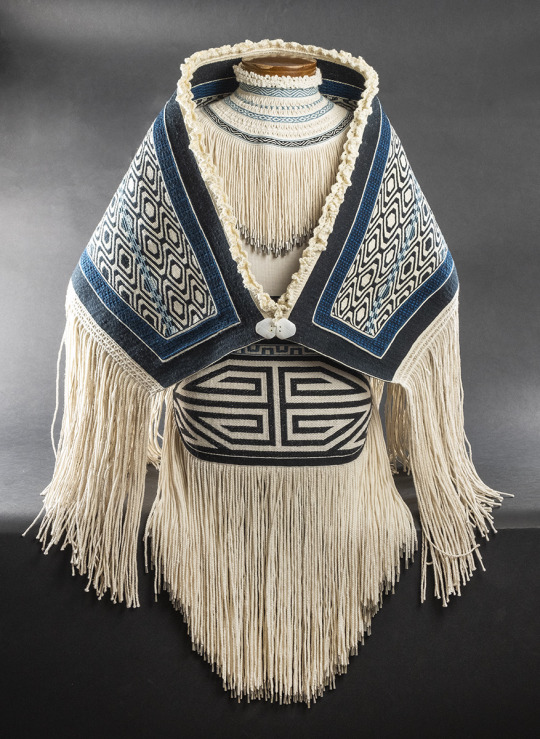
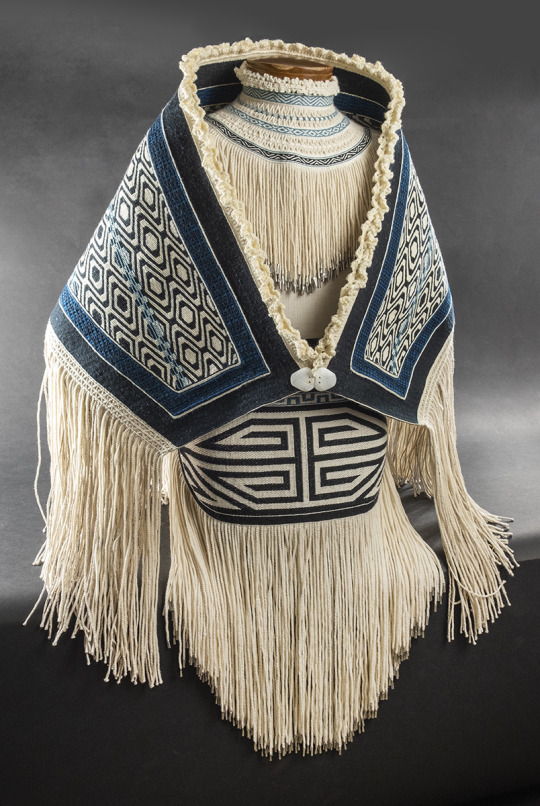
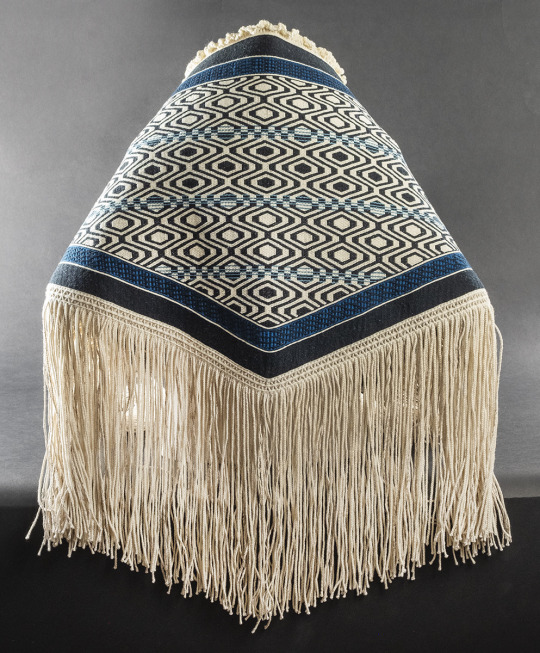
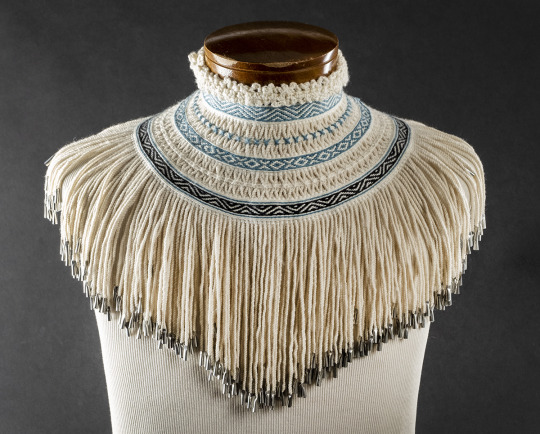
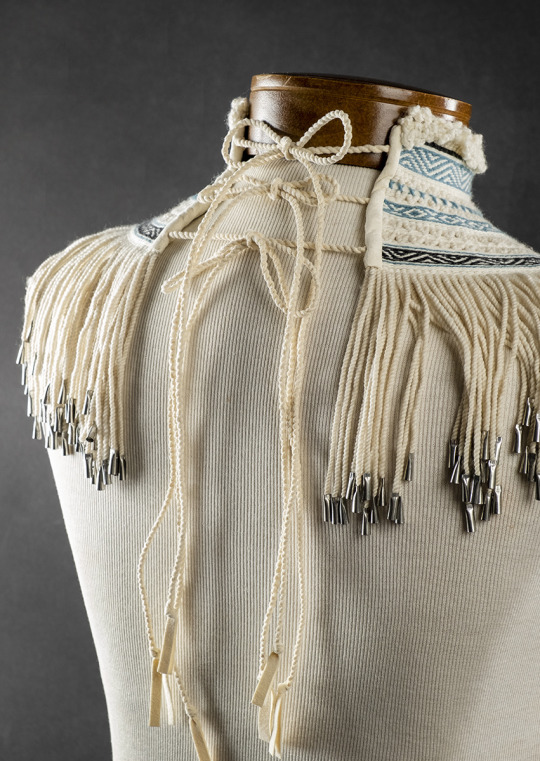
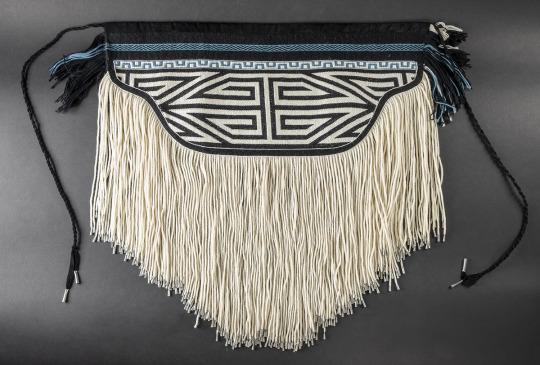
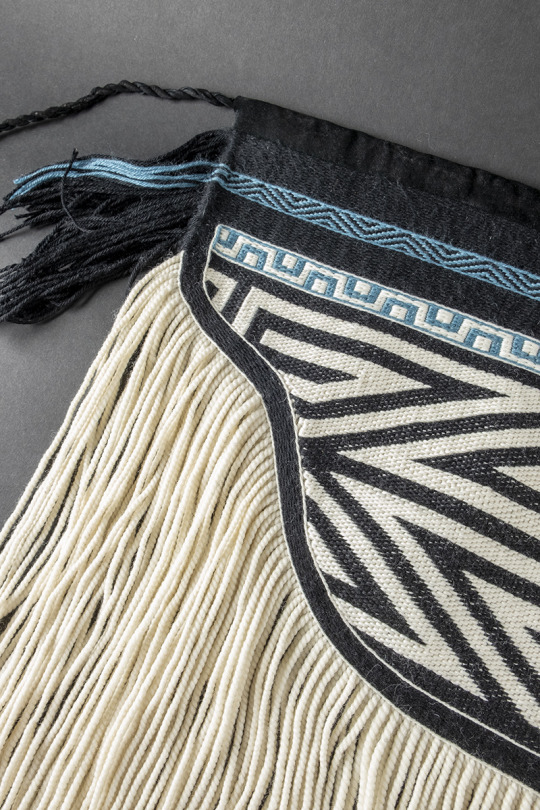
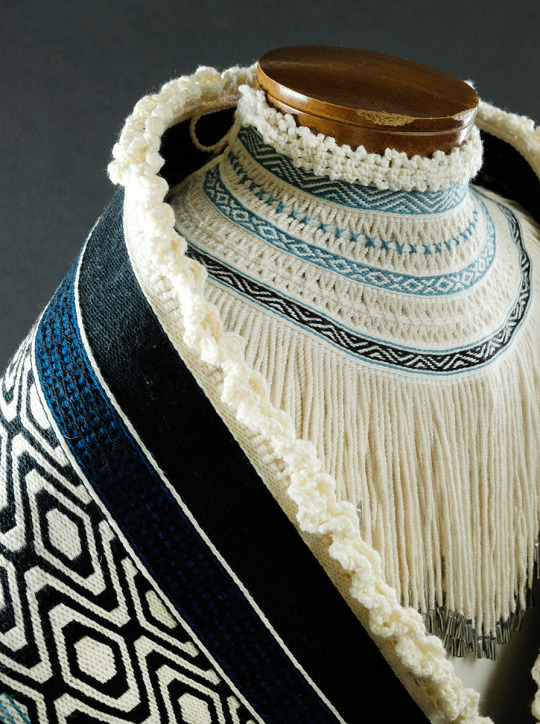

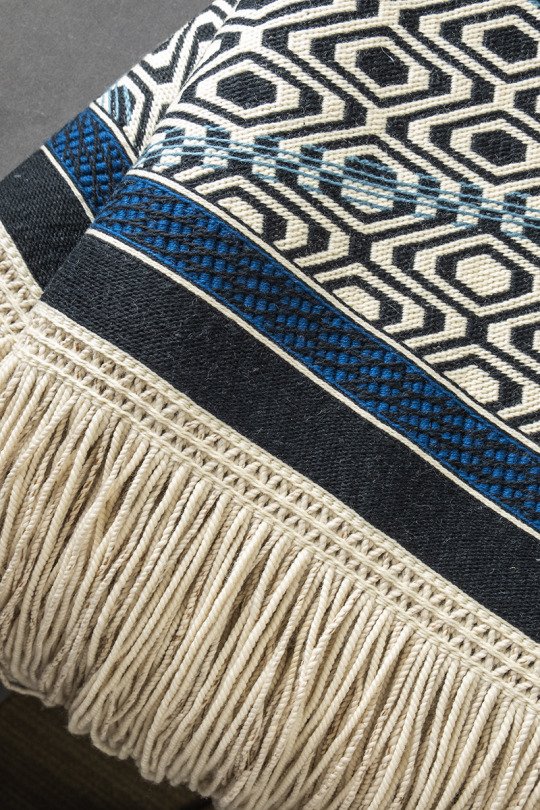
We Are The Ocean
Ursala Hudson (Tlingit/Filipino/German)
collar: merino wool, silk, steel cones, leather. ravenstail patterns, crochet, basketry twining technique. Woman as a Wave shawl: merino wool, silk, cedar bark. chilkat and ravenstail patterns, crochet, basketry twining technique. Tidal apron: merino wool, silk, leather, steel cones. chilkat and ravenstail patterns.
“We Are the Ocean is an ensemble comprised of a collar, apron (entitled Tidal), and shawl (entitled Woman as a Wave). The collar and bottom edge of the shawl are twined using a basketry technique to bring delicacy to the regalia, made specifically to emphasize the wearer’s feminine essence. In place of the sea otter fur that traditionally lines the top of Chilkat and Ravenstail weavings, the merino weft yarns were used to crochet the collar and shawl’s neck lines, bringing forward and incorporating a European craft practiced by both my maternal (Tlingit/Filipino) and paternal (German) grandmothers. The high neck of the collar gives tribute to the Western aesthetics that have forever influenced the Indigenous cultures of our lands; with grace, we embrace that which cannot be undone, and use our new form to be better. The apron’s pattern was studied and graphed from an old Tlingit cedar bark basket, and represents the tides of our lives, as our lessons continue to arise in a revolving cycle, yet made of new debris. The repetitive pattern of the shawl represents the infinite connectedness of our sisters, mothers, aunties, and daughters. Blue lines break up inverted rows, representing the “past,” “present,” and “future,” acknowledging these concepts as irrelevant constructs that fall away when we commune with the Divine. The entire ensemble is worn to evoke the innate spirit of the Woman as an ethereal deity, that resides within us all.”
#textiles#regalia#fiber art#weaving#ursala hudson#tlingit#filipino#indigenous art#native art#first nations art#ndn art
4K notes
·
View notes
Text

Winter Solstice 2024
It is cold and it is dark, but the Winter Solstice brings the promise of light's return and the warming of our world. To celebrate this most important day, we feature a naturally-dyed wool weaving entitled Náhookǫsji Hai (Winter in the North) / Biboon Giiwedinong (It is Winter in the North) held at the Minneapolis Institute of Art (MIA) and produced by Navajo artist D. Y. Begay in 2018. This image, which is only a portion of the slightly larger work, is from our copy of the exhibition catalog Hearts of Our People: Native Women Artists edited by Jill Ahlberg Yohe and Teri Greeves (Kiowa) and published by the MIA in association with the University of Washington Press in 2019.
D.Y. Begay (b. 1953), a Navajo born to the Totsohni’ (Big Water) Clan and born for the Tachinii’ (Red Running into Earth) Clan, is a fourth-generation weaver. Begay’s tapestries encompass her interpretation of the natural beauty and descriptive colors of the Navajo reservation, reflecting on her Navajo identity and her family’s weaving tradition. This spiritual connection to the plants yields the natural colors that are transformed into evocative land formations on her loom. Of the weaving shown here, Jennifer McLerran, curator at the Museum of Northern Arizona and a retired assistant professor of art history at Northern Arizona University, writes:
Most of D. Y. Begay's textiles respond to the Southwest landscape in which she was raised and resides today. For this work, a textile produced with all-natural dyes and handspun wool, Begay traveled to Minnesota in the depths of winter to observe the land surrounding the Grand Portage Indian Reservation of the Ojibwe people. Over an extended period she observed changing light conditions as the sun and clouds moved across the sky, altering the hues of snow and water.

D. Y. Begay with her weaving Confluence of Lavender by Arizona videographer Kelso Meyer, 2016. From the University of Virginia Mellon Indigenous Arts Program.
We wish you a most serene Winter Solstice.
View posts from Winter Solstices past.
View other posts from our Native American Literature Collection.
#Winter Solstice#D. Y. Begay#Winter in the North#Navajo weaving#Navajo textiles#Indigenous artists#Navajo#Ojibwe#textiles#Native American artists#Native Americans#Indigenous#indigeneity#Jill Ahlberg Yohe#Teri Greeves#Jennifer McLerran#Hearts of Our People: Native Women Artists#Native American Literature Collection#Indigenous American Literature Collection#Native American art#Indigenous art
285 notes
·
View notes
Text


Shawl, American, ca. 1840
Brooklyn Museum Costume Collection at The Metropolitan Museum of Art
This shows a very effective use of changeante silk which would constantly shimmer and change color with each movement of the wearer. This type of subdued color was popular in the 1840s.
#radio spaceman#1840s#textiles#textile art#fashion#met museum#saw a screencap of a tweet highlighting this piece that was jpeg artifacted to hell and back so im reposting it natively on here!#anyways shot silk is so goddamn cool guys i'd love to make some and fuck around with it
33 notes
·
View notes
Text

Dog Effigy Basket, 1993
Made by Alice Juan, Tohono Oo' dham (Papago), Tucson, AZ, USA
Spotted on display at Carnegie Museum of Natural History (36067-1 a & b)
#animals in art#20th century art#museum visit#dog#dogs in art#Native American art#Indigenous art#animal effigy#basket weaving#basket#textiles#Papago#Tohono Oo' dham#1990s#Carnegie Museum of Natural History
81 notes
·
View notes
Text

Marilou Schultz, a Diné artist, weaves blankets marking the work of Native women at a micropchip plant in Fairfield, in the United States. A fun article about her work in Hypoallergenic, here.
#textile art#art#weaving#Dine#Native American#indigenous people#indigenous art#textiles#women's art#women artists
22 notes
·
View notes
Text

powwow boyfriends <3
28 notes
·
View notes
Text


Jan 30th
Received this tapestry from the Kew collections today. This lovely little textile has little information about it but is understood to be an example of Native American pine leaf weaving. Its in remarkably good condition for being rolled up in a bag for the last century!
30 notes
·
View notes
Text

DY Begay (Diné, b. 1953), "Natural Two," 2010. Wool and plant dyes, 33 11/16 × 50 3/16 in. Collection of Jürg & Christel Bieri. Photo by Walter Larrimore for the National Museum of the American Indian.
"I'm inspired by colors from washes [dry stream beds] that I walk daily. [One] particular day we received some rain and the moisture restored and enriched the tired hues and soil designs. These land formations are dynamic movements—juxtaposing waves, like in the ocean. These natural events ignite my creative energy."—DY Begay
Fiber artist DY Begay is a Diné woman who weaves on a Diné loom in the customary plain-weave technique with churro wool—and from this foundation she has established an artistic career characterized by expanding the boundaries of her Diné weaving tradition. In pursuit of mastery, DY Begay has explored historical and contemporary weaving and dyeing practices as inspiration. From diverse global traditions, she has absorbed the values that she continuously applies to her personal style: perfecting her technical skills on the loom, exploring the expressive power of color through dyeing and blending, and establishing harmony within her compositions.
Though intrigued by them, Begay moved beyond the horizontal, geometric designs more typical of regional Diné textiles, and instead composed asymmetrical tapestries with rippling bands of color with occasional references to Diné geometric designs. Begay's designs are never static; she varies her creations between geometric, figurative, and abstract tapestries, as seen here in "Natural Two" which is currently on view through July 13 at our Washington, DC location in "Sublime Light: Tapestry Art of DY Begay."
[via Smithsonian National Museum of the American Indian]
#dy begay#weaving#textiles#native art#dine#indigenous art#indigenous#indian#native american#smithsonian#museum#american indian#smithsonian national museum of the american indian
10 notes
·
View notes
Text

alright alright ok but this one is almost done we’re on the final stretch …..erm….sorry the final stitch babey. Let’s goooooooooooo

32 notes
·
View notes
Text

This cozy cabin on wheels is the perfect blend of nature and comfort, where every detail is designed to bring the outdoors in. The expansive windows frame breathtaking forest views, while the warm, earthy tones of tribal textiles invite you to settle in and savor the serenity of the space. Above, the snug loft offers a retreat for restful slumber, with wood-paneled ceilings that feel as if you're nestled right beneath the canopy of trees. The thoughtful use of every inch of space, combined with handcrafted accents, transforms this tiny home into a soulful hideaway—a place where nature, simplicity, and beauty come together in perfect harmony.
#hygge#hygge life#hygge home#hygge vibes#Cabin in the woods#tiny house on wheels#boho style interior#rustic modern#native textiles#forest home#minimalist living#cozy corner#tiny home inspiration#woodwork art#off grid lifestyle#tiny home goals#tribal patterns#boho inspo#wood and stone#small spaces big style#earthy interiors#forest living#artisanal design#outdoor views#rustic haven#ecofriendly living#warm minimalism#handcrafted furniture#native inspired#cozy vibes only
5 notes
·
View notes
Text

Melissa Cody, “Navajo Whirling Log” (2019), aniline-dyed threads and hand-died variegated wool (photo Sháńdíín Brown/Hyperallergic)
Why Native Artists Are Reclaiming the Whirling Log
"The Diné symbol was suppressed for decades by a settler-dominated art market that conflated it with the Nazi insignia."
36 notes
·
View notes
Text
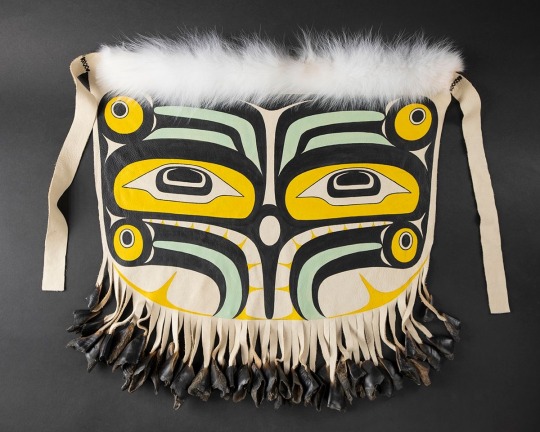


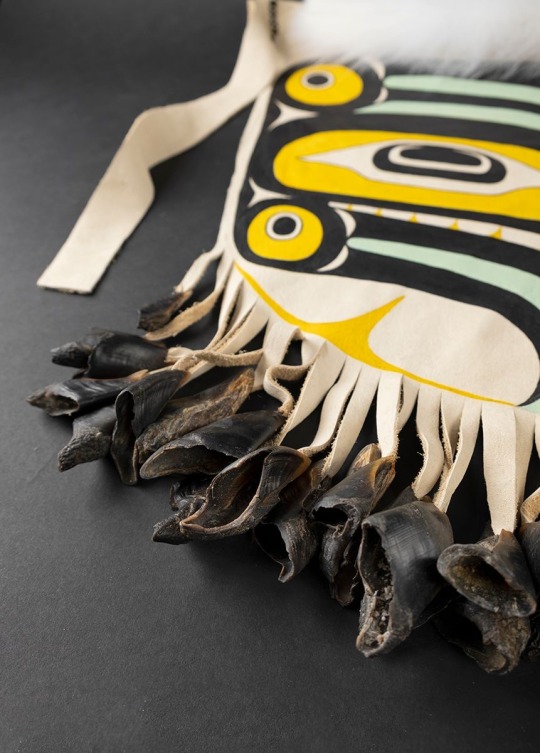
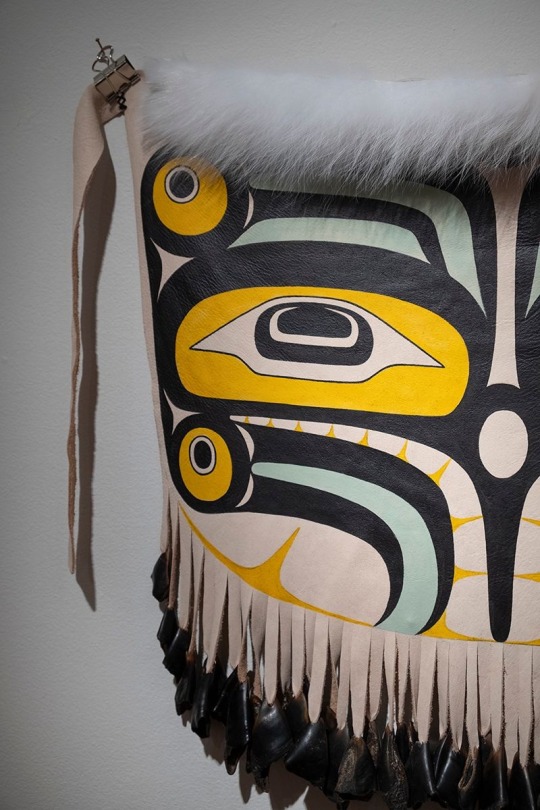
Mouse Woman Dance Apron
Andrea Diane Cook (Haida)
elk hide, arctic fox fur, acrylic paint, deer hooves. 24” x 26”
The Sound of my people’s songs, the reverberation of drums, and the clinking of rattles and deer hooves make me reminisce of times of coming together. It has been some time since we have gathered for potlatches and practiced our songs and dance due to Covid-19. My inspiration to create this piece came from my longing to sing and dance with my people safely again.
90 notes
·
View notes
Text

ARTIST WEAVER - LUCY BEGAY
NAVAHO NATION
31 notes
·
View notes
Text

damn if only there was a way to find out...
#im looking at an old book about textile patterns of the 'Indians of Mexico'#some of its funny because like. shit like this.#where white people believe native people to be some mythical other that they can never truly know about#and can only speculate on them
32 notes
·
View notes
Text
#WorldOrcaDay:

Chilkat blanket with Orca design, Tsimshian (Pacific NW Coast)
Twined weave; warp of yellow cedar bark & mountain goats' wool, weft of pure mountain goats' wool
Field Museum no. 19571 (photographed on display in 2022)
#animals in art#animal holiday#museum visit#Field Museum#World Orca Day#orca#orcas#killer whale#killer whales#whale#whales#cetaceans#sea mammals#Pacific Northwest Coast art#Chilkat#Tsimshian#First Nations art#Native American art#Indigenous art#textiles#wool#blanket
76 notes
·
View notes